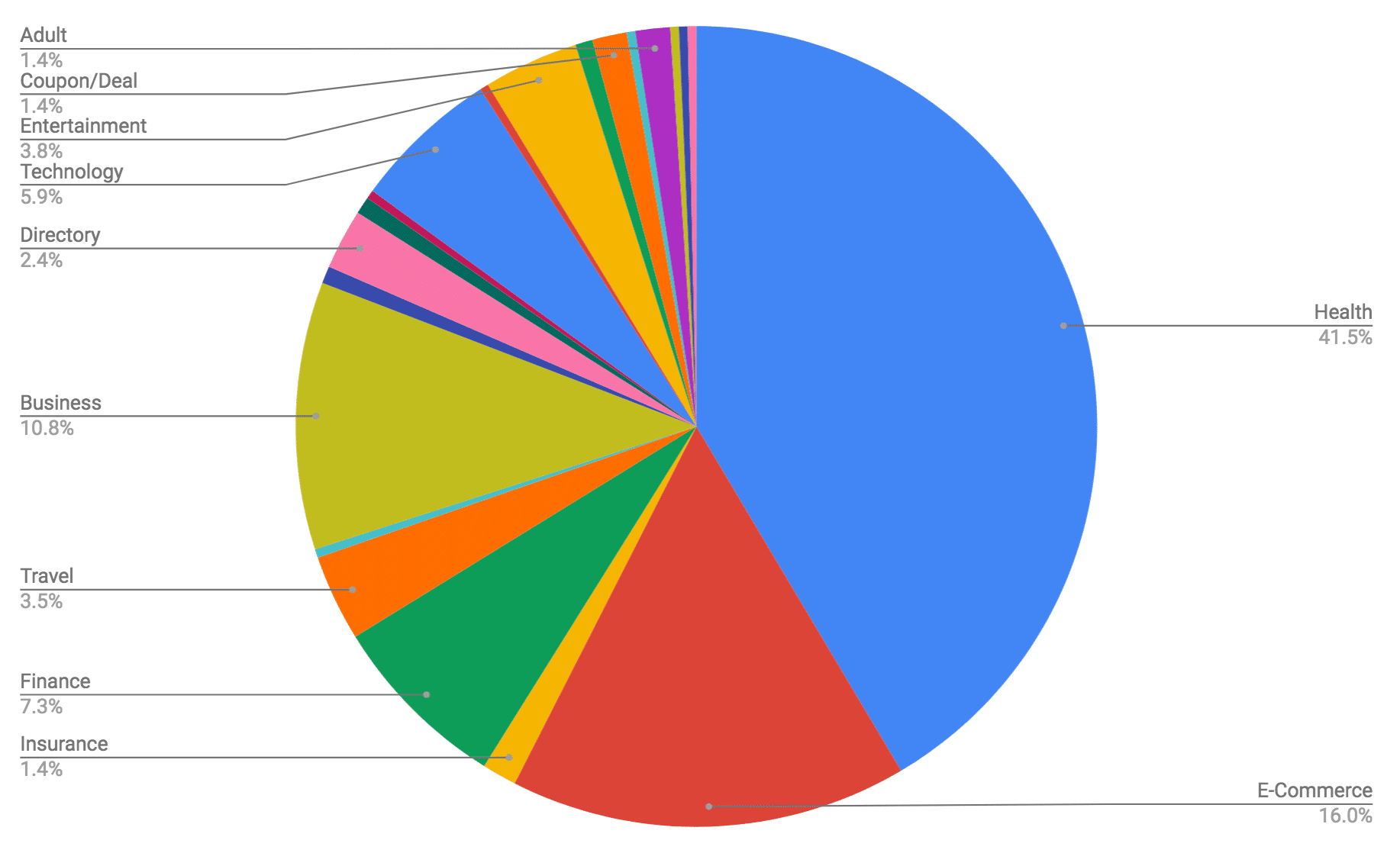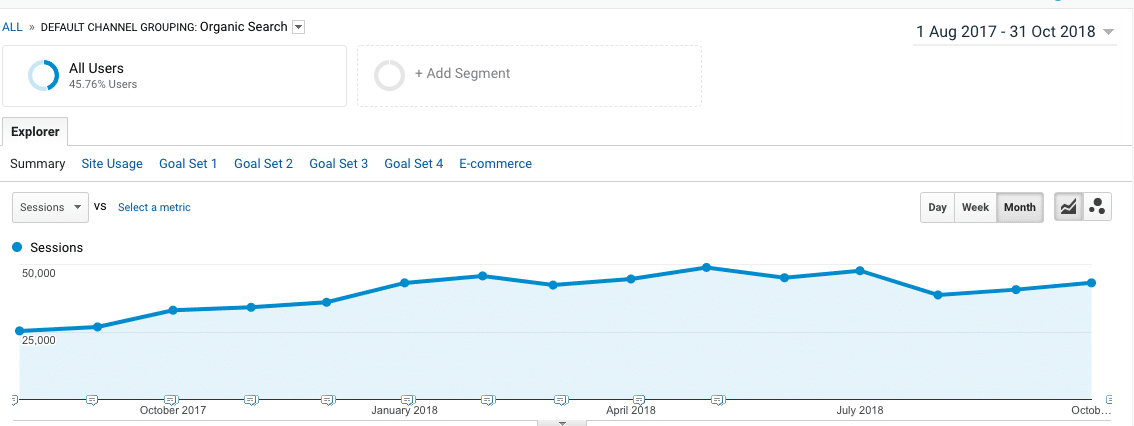A Simple Guide to Recovering From the Medic Update
Google update their algorithms on a daily basis. The updates make Google’s ranking process more efficient and provide the best search results for Google users. The vast majority of those updates pass by without impacting or even being noticed by site owners.
There are some updates which are by no means as inconspicuous. Those updates capture global attention and create issues for thousands of websites across many industries. Some of the most infamous of those updates also gain their own nicknames. The so-called ‘Medic Update’ is a prime example. For more information on fixing these issues please visit this article on SEO pricing.
Book a Consultation
What is the Medic Update?
On the 1st of August 2018, Google introduced what they described as a broad core algorithm update. What that means is that it was a significant update which would impact how a vast range of different websites were assessed and ranked.
Almost immediately it became clear that the new update was going to make waves. Websites started to see a huge downturn in organic traffic straight after the update rolled out.
The update then gained its ‘Medic Update’ label after research by Search Engine Roundtable. That research revealed that pages from the health sector accounted for 42% of the adversely affected sites. Those sites weren’t alone, however.

The update was not specific to the medical industry but did focus largely on so-called ‘Your Money or Your Life’ (YMYL) sites. Those are sites or pages that Google believe may have a direct impact on a user’s quality of life. Typically, they are sites which play on users’ worries to leverage them into making purchases. Sites in the financial and legal niches were therefore heavily affected, along with medical sites.
That’s all very well, but what does the update mean for pages which lost traffic after its introduction? According to Google, it doesn’t necessarily mean they’re doing anything wrong:
‘There’s nothing wrong with pages that may now perform less well. Instead it’s that changes to our systems are benefiting pages that were previously under-rewarded.’
It’s perhaps because of vague statements that the Medic Update proved so difficult for affected sites to recover from. More than four months after the update, stories of successful recoveries are still few and far between.
We’ve taken a look at a pair of those success stories in order to put together this simple guide to recovering from the Medic Update based on what has been proven to work.
Recovering from the Medic Update
Before we get to our specific examples of Medic Update recoveries, it’s worth taking a look at what Google’s John Mueller has had to say. He engaged with Reddit users to talk about how they might go about recovering from the update.
According to Mueller, technical tweaks or small architecture changes are not enough to reverse a fall in traffic following the Medic Update. He suggested that sites which had seen traffic drop, needed to be looked at in their entirety:
‘If you’ve seen a significant, steady change around the core algorithm updates, then you probably want to go past incremental updates and instead rethink things overall… you’d want to step back, understand where the site’s audience is & where it’s going, and rethink how you’d like to position the site within the 2019+-web.’
That means there are no quick fixes for recovering from the Medic Update. Any recovery must be achieved by a prolonged and overarching improvement of a site. Looking at examples of sites which have already achieved that kind of improvement should give you some idea of where you might start.
Doctoranytime.gr’s Recovery
Doctoranytime.gr is a website featuring physician reviews. It also allows users to book medical appointments. That put it squarely in the crosshairs of the Medic Update and it suffered a marked decrease in traffic when the update rolled out.
In one month following the update, the site had lost on average 50% of its organic traffic. There had been a 72% drop in traffic to their blog and around a 45% drop in traffic for pages on their main domain. On average, the site’s SERPs fell around five places.
It was clear that the site needed to do something drastic to recover from that huge loss of traffic. They’ve shared exactly what it was that they did as a case study.
Doctoranytime.gr began by focussing on their blog. As essentially a collection of glossaries and guests posts they knew it had SEO issues but didn’t think they would affect their main domain. In light of the medic update, they realised that wasn’t the case.
There were links back and forth between the blog and the main site, as well as plentiful commercial CTAs. That meant that Doctoranytime.gr fit Google’s definition of a YMYL site. The site’s owners recognised that and looked to completely separate their blog and main domain. They used ‘nofollows’ on links and drastically reduced the number of CTAs in posts.
Following the Medic Update, rating star snippets on the Doctoranytime.gr site disappeared. The site owner found that they remained on the second language version of the site. That led them to look more closely at how they’d implemented that second language version.
By removing the rating star snippets from the second language version, they managed to restore them to their main site. Deleting Google’s auto-translate plugin also proved important. It seemed that Google had recognised auto-translated content as auto-generated content and so had marked it as spam.
The steps taken by Doctoranytime.gr proved very successful. Establishing their blog as a reliable resource to answer the true intent of users immediately saw its traffic go back up. Restoring the rating stars snippet and removing the auto-translate plugin resulted in a similar jump in overall SERPs.

Peachy.co.uk’s Recovery
Peachy are payday lenders. In the month leading up to the Medic Update, their site received around 47,000 visits. In the very next month, that figure had fallen to 38,000. Such a drastic fall in traffic led them to also make significant changes to their site.

Landing pages were most aggressively targeted. Peachy found that many of those pages were targeting the same keywords and so duplicated content. They worked to merge those pages and also to improve the content they contained.
That included rewriting key sections like their ‘about us’ and ‘contact’ pages. They made those pages more open and comprehensive. They included information about their complaints process and third-party reviews. Those details demonstrated the company’s trustworthiness.
Trustworthiness was key when it came to changes Peachy also made to their metadata. They toned down the aggressive nature of their title tags and emphasised trust instead. Tag content like ‘Get Up to £1,000 Today!’ became ‘Trusted by 2 Million Customers’.
Like Doctoranytime.gr, Peachy also took time to improve their blog content. They changed strategy from posting on a very regular basis to only posting one or two times per month. That meant what they posted could be more comprehensive and better researched. Sources which had been used for that research could also be linked to within the content.

Peachy.co.uk’s changes also reaped significant rewards. Just two full months after their improvements were complete, site visits were back up to around 43,000. The click-through rate for their home page had risen to between 7.3% and 10%. Finally, their blog post traffic more than trebled from around 800 to close to 2,900 visits per month.
The Bottom Line: Expertise, Authority & Trust
Those case studies paint a clear picture of recovering from Google’s Medic Update. When Mueller talks about improving a site overall, he’s clearly harking back to the idea of expertise, authority and trust (E.A.T).
E.A.T is something Google have always been interested in. They want sites to contain relevant and authoritative content. They rate sites more highly if they display a better level of knowledge and expertise in their subject. Displaying trustworthiness and reliability will also play well with algorithms and Google reviewers. The Medic Update clearly put added emphasis on the idea of E.A.T, particularly for YMYL sites.
Improving blog content to make it more useful to readers and less concerned with driving traffic to commercial pages worked well for both Doctoranytime.gr and Peachy. Removing duplicate content or content Google thought was auto-generated also delivered positive results for both sites.
Peachy’s recovery, in particular, displays the importance of trust. Making their ‘about us’ information more comprehensive played a key part in their recovery. As did allowing customers to contact them in an increased number of ways. Emphasising trust in metadata, rather than featuring aggressive tag text, also seemed to be a very successful strategy.
That all suggests that any sites looking to recover from the Medic Update do need to take John Mueller’s advice to heart. Recovery will not be achieved by easily actioned technical changes.
Sites must be viewed as a whole and made to be as useful as possible to users. Content should really answer the questions users have and not simply look to sell them something. Sites must also be reliable and trustworthy, in order to avoid falling into the trap of being viewed as a YMYL site.


